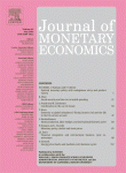JME style requirementsYou should consult the Guide to Authors page on Elsevier's website for detailed instructions. The editors of the JME also request you follow the instructions below.
General formatting
Formatting templates We have some templates that can aid you in formatting manuscript submissions using Latex, Scientific Word or Microsoft Word. Details on reference format For monographs Hawawini, G., Swary, I. , 1990. Mergers and acquisitions in the U.S. banking industry: Evidence from the capital markets. North-Holland, Amsterdam. For contributions to collective works Brunner, K., Meltzer, A.H., 1990. Money supply. In: Friedman, B.M., Hahn, F.H. (Eds.), Handbook of Monetary Economics. Elsevier, Amsterdam , pp. 357-396. For periodicals Griffiths, W., Judge, G., 1992. Testing and estimating location vectors when the error covariance matrix is unknown. Journal of Econometrics 54, 121-138. Note that journal titles should not be abbreviated. |
Editors
Borağan Aruoba Eric Swanson Associate Editors Klaus Adam David Argente Christiane Baumeister Jaroslav Borovicka Ryan Chahrour Davide Debortoli Luca Fornaro Adam Guren Kinda Hachem Cosmin Ilut Ethan Ilzetzki Anton Korinek André Kurmann Zheng Liu Frederic Malherbe Leonardo Melosi Andreas Mueller Pablo Ottonello Natalia Ramondo Felipe Saffie Benjamin Schoefer Eric Sims Luminita Stevens Johannes Wieland Jonathan Wright Fang Yang |
